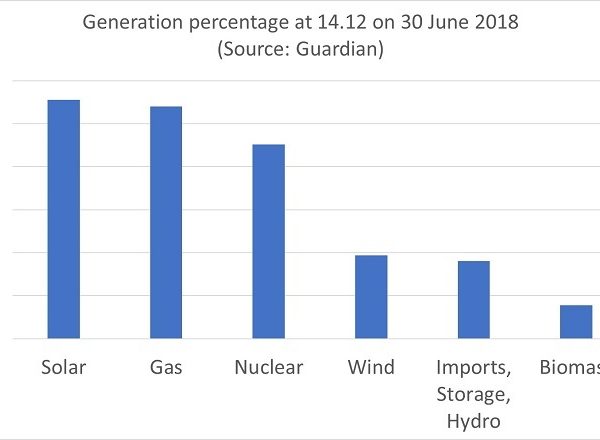As solar energy continues to increase in prominence, so too does the policy framework surrounding this infrastructure. In this series of articles, we will discuss the guidance that is taking shape down under.
Image AI generated.
Starting off in New South Wales (NSW), Glint and Glare guidance continues to evolve. In 2022 the NSW Department of Planning and Environment published the ‘Large-Scale Solar Energy Guideline’ [1]. The objectives of the guideline are to provide a clear and consistent policy framework, to reduce environmental and social impacts, and promote best practice throughout the development process.
The guideline is applicable to the development of large-scale solar energy projects that are declared as state significant developments (SSD) and includes infrastructure and buildings for electricity generation using ground-mounted photovoltaic (PV) panels [2]. A project is known as a SSD if it requires development consent and has a capital investment value of more than AU$30 million, or a capital investment value of more than AU$10 million and is in an environmentally sensitive area of state significance [3].
The Minister for Planning is generally the consent authority for SSDs. Development consent for SSDs typically include a range of conditions for mitigating impacts, and detailed requirements for visual amenity impacts and glint and glare.
Glint and Glare
The Glint and Glare requirements of the ‘Large-Scale Solar Energy Guideline’ are fairly similar to Pager Power’s own methodology. Firstly, the guideline expects that the Glint and Glare report should represent a worst-case scenario, and assumes there is no cloud cover throughout the year, as does the Pager Power model. Secondly, the guidance also expects details of strategies to avoid or mitigate impacts including re-siting or sizing the project, altering tracking patterns, implementing vegetation screening, or entering into agreements with landholders if all other measures have been exhausted [4].
The NSW guideline has specific scopes, methodologies, and objectives for different receptors. The table below presents these for the most common receptor types: residential dwellings, road, rail, and aviation [5].
table
| Receptor | Scope | Methodology | Performance Objective |
| Residential dwellings | All dwellings within 3km of the proposed PVs that have a line of sight | Analysis of the daily and yearly glare impacts in minutes All dwelling receptors must be assessed at a height of 1.5m above ground level (agl)` |
Impact ratings: High glare impact:
Moderate glare impact:
Low glare impact:
|
| Road | All roads within 1km are to be assessed | Solar glare analysis to identify whether Glint and Glare is geometrically possible within the forward looking eyeline of motorists | If glare is geometrically possible then measures should be taken to eliminate the occurrence of glare
The applicant must demonstrate that glare would not significantly impede the safe operation of vehicles |
| Rail | All rail lines within 1km are to be assessed | Solar glare analysis to identify whether Glint and Glare is geometrically possible within the forward looking eyeline of rail operators | If glare is geometrically possible then measures should be taken to eliminate the occurrence of glare
The applicant must demonstrate that glare would not significantly impede the safe interpretation of signals and signage |
| Aviation | All Air Traffic Control Towers and take-off/landing approaches to any runway or landing strip within 5km of the proposed PVs | Solar glare analysis that is worst case in all scenarios accounting for all aircraft using the airport (e.g. gliders, helicopters etc) | Any Glint and Glare should be avoided unless the aerodrome operator agrees that the impact would not be material (that the glare occurs at times when there are no flights or would not pose a safety risk to airport operations) |
The scope, methodology, and performance objectives listed within the NSW guideline is closely aligned with Pager Power’s own guidance. By assuming a worst case scenario, Glint and Glare reports can reduce potential impacts on amenity and safety for surrounding receptors.
In the next article in this series we will look at the planning process for solar developments in Australia.
About Pager Power
Pager Power undertakes technical assessments for developers of renewable energy projects and tall buildings worldwide. For more information about what we do, please get in touch.
References
- https://shared-drupal-s3fs.s3.ap-southeast-2.amazonaws.com/master-test/fapub_pdf/Lisa+Drupal+Documents/16007_DPIE+Large+Scale+Solar+Energy+Guidelines_26-9-22.pdf
- https://shared-drupal-s3fs.s3.ap-southeast-2.amazonaws.com/master-test/fapub_pdf/Lisa+Drupal+Documents/16007_DPIE+Large+Scale+Solar+Energy+Guidelines_26-9-22.pdf
- 4.36, EP&A Act; section 2.6 and schedule 1, section 20, State Environmental Planning Policy (Planning Systems) 2021 (Planning Systems SEPP)
- https://shared-drupal-s3fs.s3.ap-southeast-2.amazonaws.com/master-test/fapub_pdf/Lisa+Drupal+Documents/16007_DPIE+Large+Scale+Solar+Energy+Guidelines_26-9-22.pdf
- https://shared-drupal-s3fs.s3.ap-southeast-2.amazonaws.com/master-test/fapub_pdf/Lisa+Drupal+Documents/16007_DPIE+Large+Scale+Solar+Energy+Guidelines_26-9-22.pdf




